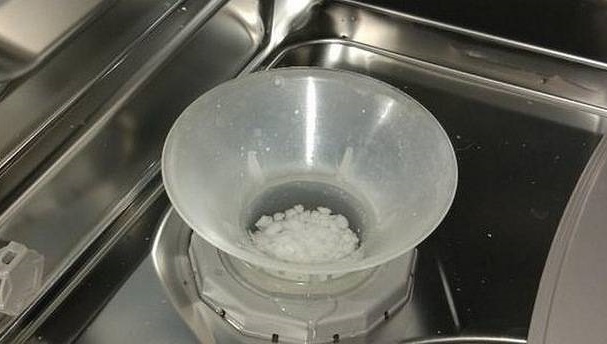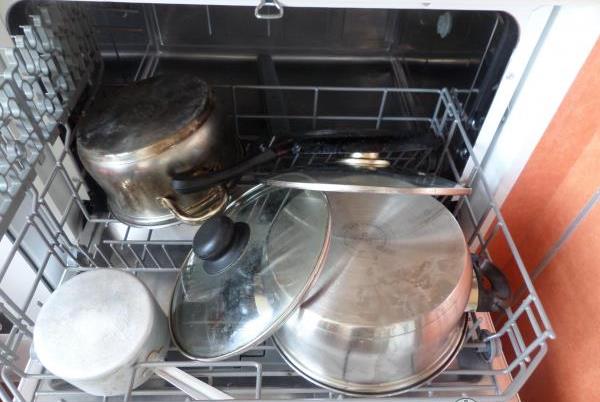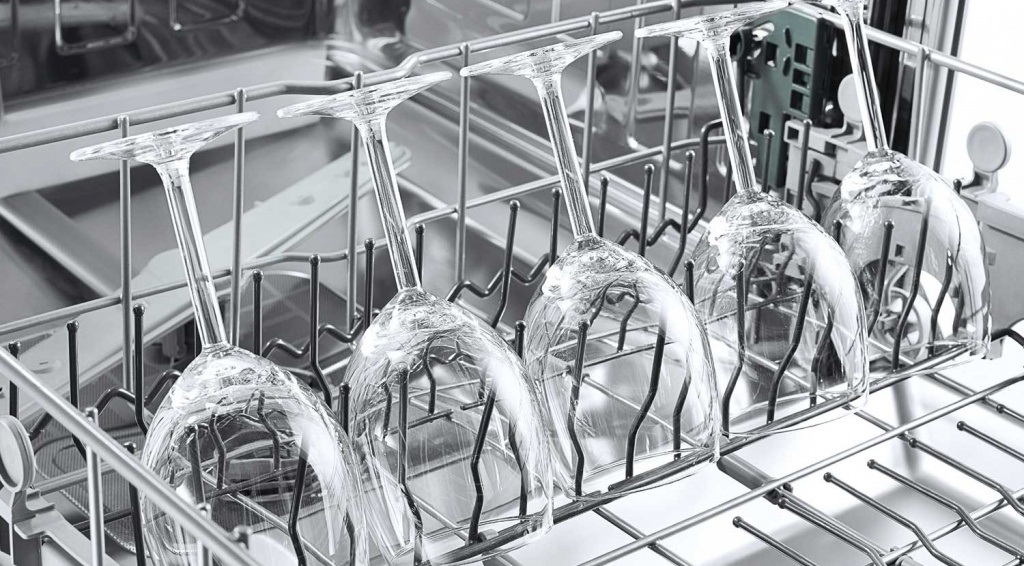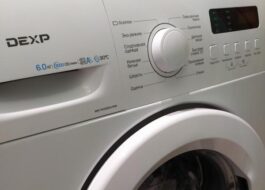How to use a Dexp dishwasher
 People who have a dishwasher for the first time often do not know how to handle it correctly. Some try to use the device intuitively, by trial and error. However, it is better to choose a different path - to thoroughly study all the nuances regarding the dishwasher.
People who have a dishwasher for the first time often do not know how to handle it correctly. Some try to use the device intuitively, by trial and error. However, it is better to choose a different path - to thoroughly study all the nuances regarding the dishwasher.
We'll tell you how to use the Dexp dishwasher. What tools will be needed during the operation of the device. Let's figure out how to load dishes into baskets.
How does the PMM control panel work?
After the new dishwasher is delivered from the store, the owners can’t wait to try it out quickly. However, there is no need to rush. Before using the dishwasher, be sure to read the instructions that came with it.
The user manual is included with the PMM. It tells how to connect the machine to the water supply and sewerage system, how to put dishes in baskets, how to prepare the dishwasher for the first start, and describes all the programs. It is important to study the manufacturer's recommendations before putting the device into operation.
Inspect the machine, paying attention to the control panel. The tidy looks different on different Dexp models. Some machines have only buttons and indicators, others have a rotary programmer.
A description of all the buttons on the control panel is in the instructions for the Dexp dishwasher.
For example, the dashboard of the PMM Dexp M9C7PD looks like this:
- the far right button is “Start/Pause” – when you press it, the cycle is activated and paused;
- The rotary control allows you to select the desired washing program;
- in the upper left corner there is a button for setting the delayed start time (3, 6, 9 or 12 hours), and warning indicators (the presence of salt and rinse aid);
- The leftmost button is “On/Off”, to turn the PMM on and off.
There are no inscriptions around the rotary dial of the dishwasher indicating the program. There are symbols drawn there, each of which corresponds to a specific mode. Let's look at each icon.
- The pot symbol is the “Intensive wash” mode. Suitable for heavily soiled dishes.
- Drawing of a deep dish – program “Regular wash”. Mode for processing dishes with medium soiling.
- ECO inscription. Eco mode, suitable for washing normally soiled dishes. When running this program, less energy and water consumption is ensured.
- The dial with the number 90 is the “90 minutes” program. Ideal for cleaning dishes that are only slightly dirty and do not require thorough drying.
- Glass and glass symbol – “Quick wash” mode. Suitable for cleaning lightly soiled appliances.
- Drawing of a wine glass - program "Glass". Designed for the care of fragile dishes with light stains.
The washing mode is selected depending on the type of dishes loaded into the chamber and the intensity of its contamination. Glass cannot be processed in an intensive program - this can damage the product. Also, the delicate cycle will not be effective for “burnt” pans.
Salt, detergent and rinse aid
PMM requires special household chemicals. To keep your dishwasher running you will need salt, detergent and rinse aid. There is a wide choice in stores - the user decides which manufacturer to choose at his own discretion.
Salt is vital for dishwashers used in regions where tap water is too hard. For most cities in Russia, this problem is relevant, so it is impossible to refuse a softener. Salt crystals protect the PMM from scale and limescale.
The dishwasher softener must be adjusted manually, taking into account the hardness level of the tap water in the region.
You can measure hardness using special test strips. The indicator must be immersed in water and the intensity of its color assessed. Based on this, the dishwasher softener is adjusted.
Next, you need to pour the salt into a special container. You need to do this:
- remove the lower basket from the washing chamber;
- unscrew the lid of the salt container;
- pour 1.5 kg of special salt for PMM into the tray;
- add water to the container to the brim;
- close the compartment and screw the lid tightly.
After filling the compartment, you need to immediately start the program. Otherwise, salt water may damage the filter assembly or dishwasher pump. We'll tell you how to run the test cycle below.
Rinse aid gives dishes extra shine and prevents the formation of stains and streaks on glass and ceramics. It also speeds up the drying of cutlery, as water drains from them faster. The dispenser for the product is located inside the PMM door; the composition must be filled to the top mark of the compartment.
The rinse aid dispenser is adjusted manually. It has six levels, and by default is set to position 4. If there are still streaks on the dishes, increase the dosage of product.
Detergents are necessary to clean dishes from grease and other contaminants. You can choose one of three forms:
- pills;
- powder;
- gel.
Tablets on fast cycles do not dissolve completely. Therefore, it is better to use them when running long programs lasting at least an hour and a half. Powder or gel are more convenient in this regard - they are suitable for short periods.
Detergent is added to the dispenser before each wash. One tablet is needed per cycle. It is better to read on the product packaging how much powder or gel you need.
How to put dishes in baskets?
There is another important nuance when using PMM - correct loading of dishes. If you do not follow the basic recommendations, the quality of the wash will be poor. All details are described in the instructions for the equipment.
Before loading the dishwasher into the machine, you need to remove any remaining food and other small debris.
This does not mean that all dishes need to be rinsed before putting them in the machine. It will be enough to clean dried pieces of food, fruit pits from plates, remove tea bags, tea leaves, etc. from mugs. Small debris remaining on appliances can easily clog the dishwasher drain system.
Place dishes in the machine as follows:
- Place deep objects (mugs, tureens, pots, frying pans) at a slight angle, bottom up (so water will drain from them freely);
- place the dishes securely so that they cannot fall;
- Make sure that cutlery does not interfere with the rotation of the spray arms.
Dexp dishwashers are equipped with two baskets for dishes and a container for cutlery. Fragile and light items (mugs, glasses, glasses, saucers) should be placed in the upper tray; heavier and dirty items (serving plates, pots, pans, lids, stewpans) should be placed in the lower tray.
It is important to follow the manufacturer’s basic recommendations:
- Do not wash too small objects in the PMM - they may fall out of the basket;
- Dishes should not lie inside each other, each item is placed separately;
- glasses and glasses should not touch to avoid damage;
- Do not place sharp knives vertically - only horizontally, and in the upper basket;
- You need to leave a gap between the dishes - then the products will be washed from all sides;
- other kitchen utensils: spatulas, ladles, whisks, laid out horizontally in the upper basket;
- Do not overload the dishwasher - this will worsen the quality of cleaning and affect energy consumption.
In PMM Dexp it is possible to adjust the position of the upper basket. It can be raised or lowered. This may be necessary when loading large dishes.
Working with a dishwasher
Having understood all the nuances, you can begin to operate. The first PMM cycle should be empty - with detergent, but without dishes in the chamber. This is necessary to clean the internal elements of the machine from factory dirt.
Also during the test cycle you need to observe the operation of the machine. Check to see if there are any leaks and if the appliance is heating the water. If everything is fine, you can use the PMM for its intended purpose.
To run a test loop:
- open the door, load detergent into the dispenser;
- turn on the machine;
- press the “On/Off” button;
- select a high temperature washing program;
- start the cycle with the Start/Pause button.
After a successful test, you can start a full-fledged wash. Load dishes into baskets following the manufacturer's recommendations. The bottom tray is filled first, then the top.
Fill the machine with detergent, turn it on and set it to the desired mode.The program is selected based on the type of dishes and the intensity of their contamination. The cycle is started with the “Start/Pause” button.
Dexp machines provide the ability to change a cycle if it has been started recently. For this:
- press the “Start/Pause” button for 3 seconds until the machine goes into standby mode;
- select another program using the rotary switch;
- press the Start/Pause key.
You can also add more dishes while the machine is running, but only if the detergent compartment is still closed. For this:
- put the machine into standby mode by holding down the “Start/Pause” button;
- open the door and load the dishes;
- Resume the cycle by pressing the Start key.
The PMM will notify you of the completion of the cycle with a sound signal. Turn off the dishwasher by pressing the On/Off button. Open the door slightly and wait 10 minutes. During this time, the dishes will cool and dry.
Next, remove the dishes, first from the lower basket, then from the upper. After this, clean the filter unit of the machine from debris and wipe the walls of the washing chamber with a damp cloth. Leave the PMM door ajar for ventilation.
Interesting:
Reader comments
- Share your opinion - leave a comment
Categories
Washing machine repair


For buyers

For users

Dishwasher

















Add a comment